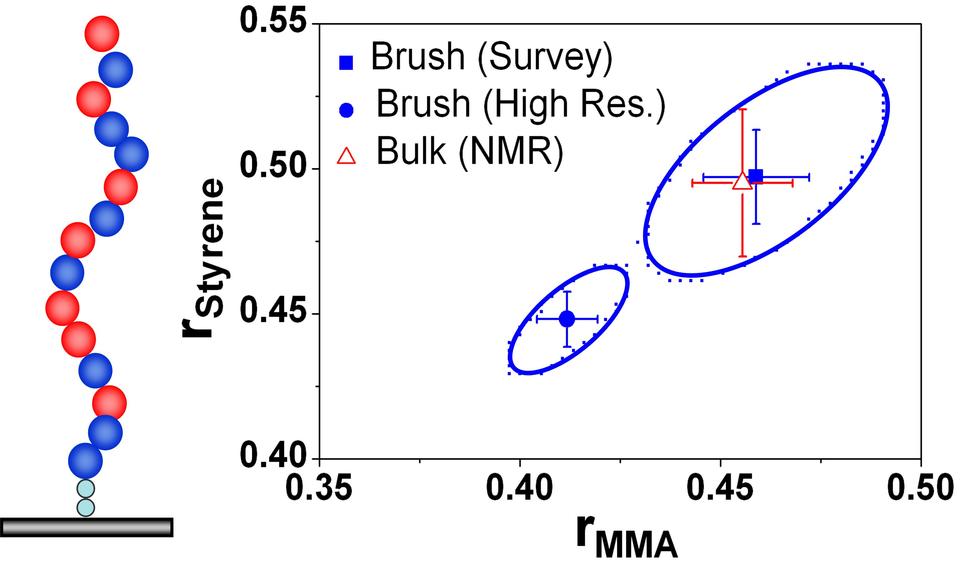Summary
Our goal is to develop combinatorial library approaches for measuring and optimizing the effect of substrate chemical functionalization on the structure and performance of polymer thin film materials and devices. Fabricated via novel combinations of self-assembly, microfluidic, soft-lithography, and surface-initiated polymerization, our continuous gradient libraries are tools for designing advanced polymeric coatings and surface functional layers.
Description
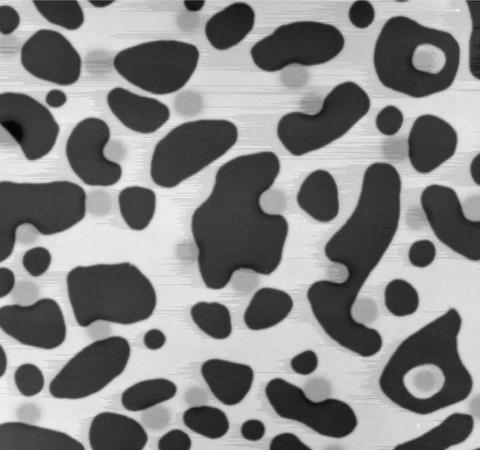
|
The behavior and performance of nanostructured materials and devices are governed by the chemistry and structure of their surfaces and interfaces. However, chemistry-structure-performance relationships in these systems are complex, so hundreds of experiments can be necessary to determine optimal surface properties. To accelerate knowledge generation and engineering in nanostructured polymer film systems, NIST is developing routes for gradient combinatorial libraries that can express key factors in surface and interfacial chemistry. Our libraries present a platform of surface conditions by which a series of systematic measurements can be made. We design these approaches for their ease of implementation. For example, one NIST method relies simply on the modulated delivery of UV light to gradually modify the surface energy of oxides functionalized with self-assembled monolayers (SAMs). By combining this method with soft lithography, more complex libraries of surface chemical heterogeneity can be achieved. In addition, NIST has developed a suite of methods that combine microfluidics and surface initiated polymerization to create libraries of tethered polymers that vary their composition, molecular mass, and architecture. |
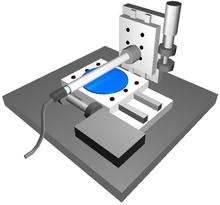 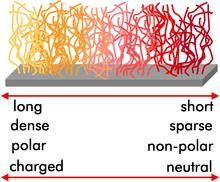 |
Major Accomplishments
|
 |
Free radical copolymerization is a valuable tool for tailoring properties of polymeric materials for a broad range of applications. For statistical copolymers, the monomer sequence distribution and compositional heterogeneity in and amongst the copolymer chains have a profound influence on the behavior and physical properties of the material. Measurement of monomer reactivity ratios, the key synthetic parameters for designing tailored copolymers, provides insight necessary to control monomer sequence; however, these parameters are time-consuming and difficult to measure.
In 2007, we successfully developed a new surface library approach for measuring monomer reactivity ratios using surface-initiated copolymerization (SIP) and X-ray photoelectron spectroscopy (XPS). Copolymerization of monomers from surface-bound initiators (see below) creates statistical copolymer brushes, where the arrangement of monomers within the tethered polymer chains is dictated by monomer reactivities.
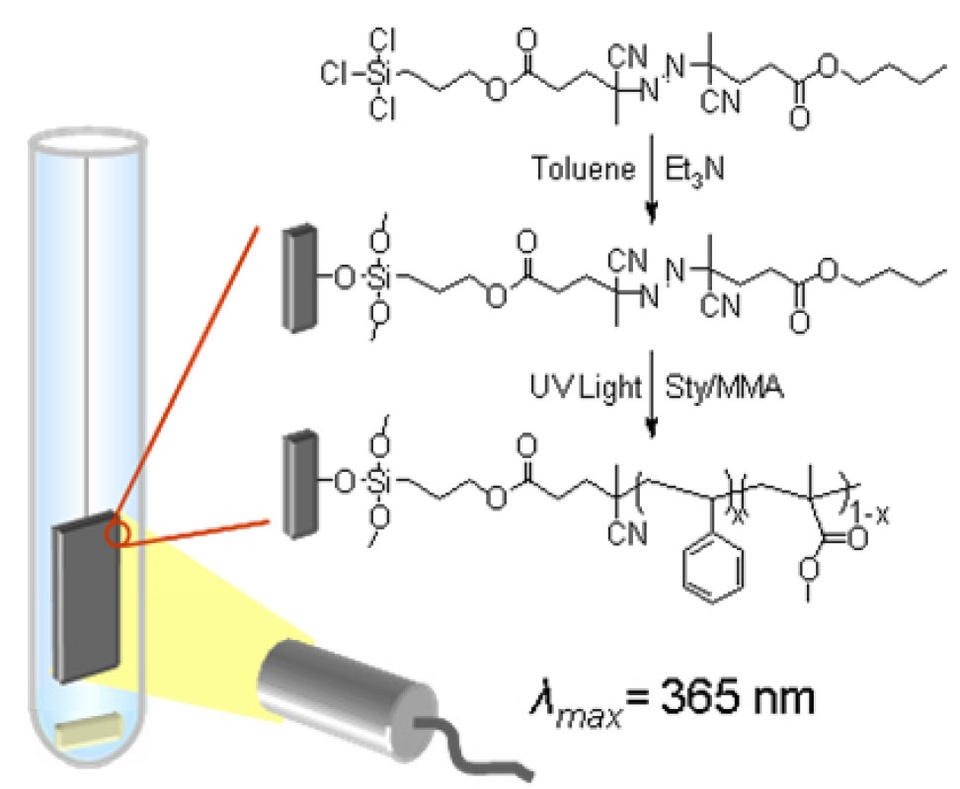
Due to a lack of segmental rearrangement within the polymer layer, these copolymer brush surfaces express the statistical distribution of monomer constituents at the interface that reflects the distribution along the length of the tethered chains. Consequently, statistical copolymer brushes provide a platform for covalently "trapping" the copolymer composition on a surface, and thus allow determination of surface chemistry by quantitative surface spectroscopic methods such as XPS (see below). Knowledge of the surface chemistry expressed from a given monomer feed provides a straight-forward assessment of the kinetic parameters that dictate copolymer composition.

As a "proof of concept," we applied our approach to the well characterized system of styrene-methyl methacrylate copolymers and found that the reactivity ratios from SIP determined by XPS agree well with those under solution reaction conditions determined by nuclear magnetic resonance (NMR) spectroscopy (see below). In addition, our method eliminates several of the experimental complications of using traditional solution polymerizations to measure reactivity ratios including monomer drift and extensive purification protocols. Ultimately, this leads to higher degrees of accuracy and precision in the measurement of these key reactivity parameters. Furthermore, these experiments shed insight into the behavior of reactions at interfaces, and represent one of the few methods reported for quantifying polymerization behavior from a surface.
We reported this work via invited and contributed lectures at FY07 national meetings of the American Chemical Society, Materials Research Society, NSTI Nanotech, and at two NIST Combinatorial Methods Center industry member workshops. This work was also recognized with the Best Poster Award at the Polymers West Gordon Research Conference.
